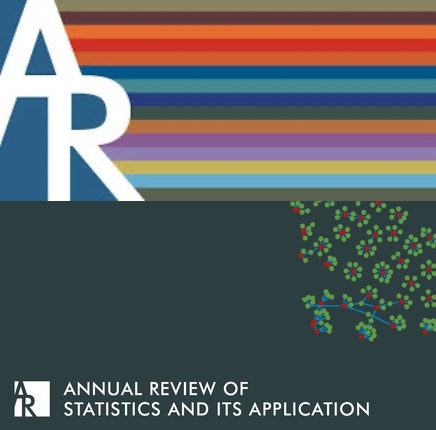球面上宇宙学数据的几何方法
IF 8.7
1区 数学
Q1 MATHEMATICS, INTERDISCIPLINARY APPLICATIONS
Annual Review of Statistics and Its Application
Pub Date : 2023-11-06
DOI:10.1146/annurev-statistics-040522-093748
引用次数: 0
摘要
这篇综述致力于球面数据统计分析的最新发展,其强烈动机是宇宙学的应用。我们从宇宙学问题和动机的简短讨论开始,认为大多数宇宙学可观察性都是球面随机场。然后,我们介绍了球面随机场的一些数学背景,包括谱表示以及针状和小波框架的构造。然后,我们关注一些具体问题,包括用于地图重建的工具和算法(即,分离对观测场有贡献的不同物理分量),用于测试高斯性和各向同性假设的几何工具,以及用于检测场中由于点源造成的污染的多种测试方法。尽管这些工具是在宇宙学背景下引入的,但它们也可以应用于处理球面数据的其他情况。最后,我们讨论了最近的和具有挑战性的问题,例如偏振数据的分析,这可以被视为自旋光纤束中取值的随机场的实现。《统计及其应用年度评论》第11卷预计最终在线出版日期为2024年3月。请参阅http://www.annualreviews.org/page/journal/pubdates用于修订估算。本文章由计算机程序翻译,如有差异,请以英文原文为准。
Geometric Methods for Cosmological Data on the Sphere
This review is devoted to recent developments in the statistical analysis of spherical data, strongly motivated by applications in cosmology. We start from a brief discussion of cosmological questions and motivations, arguing that most cosmological observables are spherical random fields. Then, we introduce some mathematical background on spherical random fields, including spectral representations and the construction of needlet and wavelet frames. We then focus on some specific issues, including tools and algorithms for map reconstruction (i.e., separating the different physical components that contribute to the observed field), geometric tools for testing the assumptions of Gaussianity and isotropy, and multiple testing methods to detect contamination in the field due to point sources. Although these tools are introduced in the cosmological context, they can be applied to other situations dealing with spherical data. Finally, we discuss more recent and challenging issues, such as the analysis of polarization data, which can be viewed as realizations of random fields taking values in spin fiber bundles.Expected final online publication date for the Annual Review of Statistics and Its Application, Volume 11 is March 2024. Please see http://www.annualreviews.org/page/journal/pubdates for revised estimates.
求助全文
通过发布文献求助,成功后即可免费获取论文全文。
去求助
来源期刊

Annual Review of Statistics and Its Application
MATHEMATICS, INTERDISCIPLINARY APPLICATIONS-STATISTICS & PROBABILITY
CiteScore
13.40
自引率
1.30%
发文量
29
期刊介绍:
The Annual Review of Statistics and Its Application publishes comprehensive review articles focusing on methodological advancements in statistics and the utilization of computational tools facilitating these advancements. It is abstracted and indexed in Scopus, Science Citation Index Expanded, and Inspec.
 求助内容:
求助内容: 应助结果提醒方式:
应助结果提醒方式:


